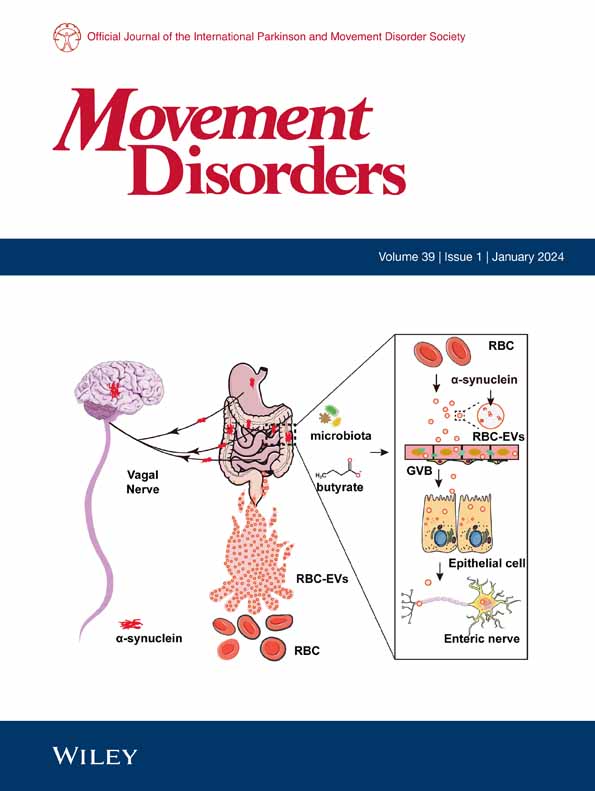θ - γ丘脑下刺激对帕金森病患者语言流畅性的影响:一项随机交叉试验
IF 7.4
1区 医学
Q1 CLINICAL NEUROLOGY
引用次数: 0
摘要
背景丘脑底核(STN)的高频深部脑刺激(DBS)可以改善帕金森病(PD)的运动症状,但可能会降低语言流畅性(VF)。θ波刺激显示出与运动恶化相关的潜在认知益处。目的:这项随机、双盲、交叉研究评估了联合θ - γ频率刺激对伴有STN - DBS的PD患者VF的有效性和安全性。方法将患者按1:1的比例随机分为标准刺激组和θ - γ刺激组。分别在基线、1小时和1个月后评估VF、运动和非运动症状。数据分析采用线性混合效应模型。结果12例患者完成了研究。1个月后,非情景性(P = 0.038)和情景性VF (P = 0.030)得到改善,而音素和转换流畅性没有变化。运动和非运动结果不受刺激的影响,有轻微的不良事件。结论联合θ - γ刺激可增强伴有STN - DBS的PD患者的VF,而不会加重运动症状或安全问题。©2025作者。Wiley期刊有限责任公司代表国际帕金森和运动障碍学会出版的《运动障碍》。本文章由计算机程序翻译,如有差异,请以英文原文为准。
Theta‐Gamma Subthalamic Stimulation for Verbal Fluency in Parkinson's Disease: A Randomized, Crossover Trial
BackgroundHigh‐frequency deep brain stimulation (DBS) of the subthalamic nucleus (STN) improves Parkinson's disease (PD) motor symptoms but may deteriorate verbal fluency (VF). Theta stimulation showed potential cognitive benefits associated with motor worsening.ObjectivesThis randomized, double‐blind, crossover study evaluated the efficacy and safety of combined theta‐gamma frequency stimulation on VF in PD patients with STN‐DBS.MethodsPatients were randomized 1:1 for standard or theta‐gamma stimulation. VF, motor, and non‐motor symptoms were assessed at baseline, 1 h, and 1 month after each period. Data were analyzed using a linear mixed‐effects model.ResultsTwelve patients completed the study. Non‐episodic (P = 0.038) and episodic VF (P = 0.030) improved after 1 month of theta‐gamma stimulation, while phonemic and switching fluency were unchanged. Motor and non‐motor outcomes were unaffected by the stimulation, with mild adverse events.ConclusionCombined theta‐gamma stimulation may enhance VF in PD patients with STN‐DBS without worsening motor symptoms or safety concerns. © 2025 The Author(s). Movement Disorders published by Wiley Periodicals LLC on behalf of International Parkinson and Movement Disorder Society.
求助全文
通过发布文献求助,成功后即可免费获取论文全文。
去求助
来源期刊

Movement Disorders
医学-临床神经学
CiteScore
13.30
自引率
8.10%
发文量
371
审稿时长
12 months
期刊介绍:
Movement Disorders publishes a variety of content types including Reviews, Viewpoints, Full Length Articles, Historical Reports, Brief Reports, and Letters. The journal considers original manuscripts on topics related to the diagnosis, therapeutics, pharmacology, biochemistry, physiology, etiology, genetics, and epidemiology of movement disorders. Appropriate topics include Parkinsonism, Chorea, Tremors, Dystonia, Myoclonus, Tics, Tardive Dyskinesia, Spasticity, and Ataxia.
 求助内容:
求助内容: 应助结果提醒方式:
应助结果提醒方式:


